Cedar Tree
- October 3, 2023
- 0 comment

The Cedar tree, a majestic member of the Cedrus genus, stands as an emblem of natural beauty, cultural significance, and ecological importance. Characterized by its imposing stature and distinctive pyramidal shape, the Cedar tree is renowned for its evergreen foliage, typically adorned in hues ranging from green to bluish-green. One of the most notable species, the Cedar of Lebanon, holds historical and religious importance, mentioned in ancient texts and revered for its symbolism.
Beyond its aesthetic appeal, cedar wood is highly valued for its durability and natural resistance to decay and pests. The wood’s aromatic qualities, a result of the presence of essential oils, have practical applications, serving as a natural deterrent for insects. In various cultures, cedar has been utilized for construction, crafting, and even in aromatherapy.
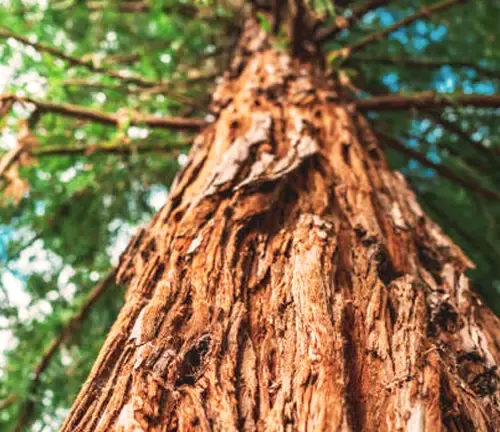
Ecologically, cedar trees play a vital role in maintaining environmental balance. Their extensive root systems aid in preventing soil erosion, contributing to soil stability and preventing land degradation. Cedar forests provide crucial habitats for diverse wildlife, offering shelter and sustenance. The cones produced by cedar trees contain seeds that are a vital food source for birds and small mammals, further enhancing their ecological importance. Despite their resilience, certain cedar species face conservation challenges due to deforestation and habitat loss, emphasizing the need for sustainable management and conservation efforts.
| Characteristic | Description |
| Scientific Name | Cedrus |
| Foliage | Needle-like leaves arranged in clusters; typically green or bluish-green, contributing to the tree’s distinct appearance. |
| Shape | Pyramidal, with a stately and imposing form. |
| Growth Rate | Generally slow-growing, particularly when young, but they can live for several centuries. |
| Habitat Range | Adaptable to different environments; found in mountainous regions, rocky slopes, and even coastal areas with well-drained soil. |
| Root System | Develops an extensive root system, aiding in soil stability and erosion prevention. |
| Soil Preferences | Prefers well-drained soil, but cedar trees display adaptability to various soil types, including sandy and rocky soils. |
| Climate Tolerance | Exhibits a broad range of climate tolerance, with some species thriving in cold climates, while others endure hot and arid conditions. |
| Modern Landscaping | Widely used in modern landscaping for ornamental purposes, providing privacy screens, windbreaks, and adding aesthetic value to gardens and parks. |
| Wood Color and Grain | Cedar wood varies in color from light to dark shades, and it often features an attractive grain pattern, enhancing its appeal in woodworking. |
A Brief History
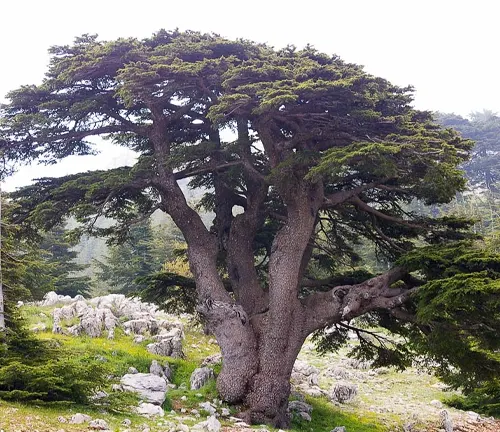
The Cedar tree, a timeless emblem of strength and endurance, has woven itself into the fabric of human history. With a lineage tracing back centuries, certain species like the Cedar of Lebanon have etched their presence into religious texts, symbolizing resilience and stability. These trees have witnessed the rise and fall of civilizations, standing tall as silent witnesses to the passage of time.
Botanical Features of Cedar Tree
Cedar trees, exemplified by species like the Cedar of Lebanon and the Atlas Cedar, showcase unique botanical features that define their enduring charm. Evergreen needles emit a fragrant aroma when crushed, and distinctive woody cones play a vital role in seed dispersal. The bark, thick and protective, varies in color among species. Internally, cedar trees boast a sophisticated vascular system, facilitating efficient nutrient transport. The prized cedar wood, known for durability and aromatic qualities, has found diverse applications from construction to crafting. Altogether, the botanical features of cedar trees not only contribute to their visual allure but also highlight their ecological and cultural significance, making them a cherished presence in nature and human history.


Color/Appearance
The aesthetic allure of the Cedar tree lies not only in its towering silhouette but also in the color palette it presents. The needle-like leaves, arranged in clusters, paint the tree in shades ranging from vibrant green to soothing bluish-green. The visual appeal of cedar forests, especially in the gentle sway of their branches, is a testament to the harmony between form and color.
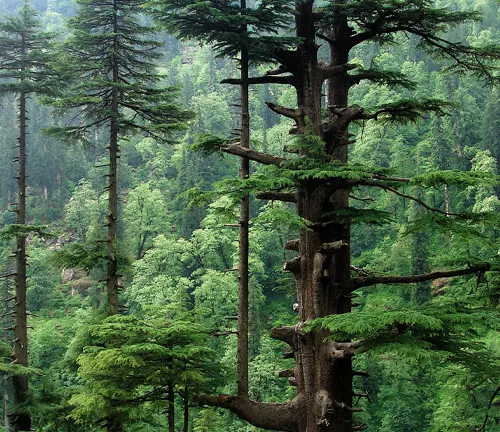
Life Cycle
Cedar trees, with their slow and deliberate growth, embark on a life cycle that spans generations. From the germination of seeds in cone-encased capsules to the maturity of mighty trunks, the life cycle of a Cedar tree mirrors a journey of patience and endurance. Some species can stand for centuries, witnessing the world evolve around them.
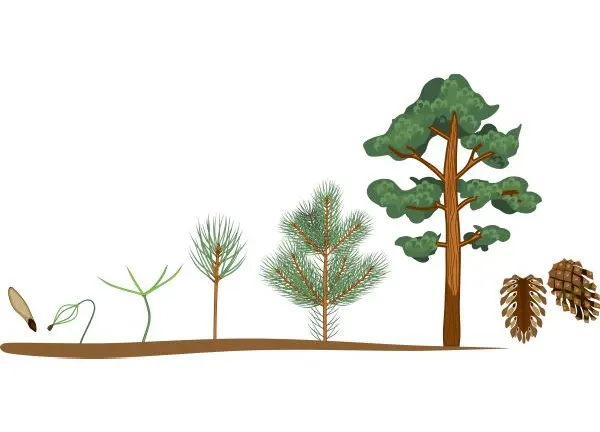
Adaptability and Resilience
Adaptability is a hallmark of cedar trees, as they gracefully navigate various climates and terrains. From the rugged mountains to coastal landscapes, these trees showcase resilience. Some species even possess adaptations to survive wildfires, contributing to the ecological processes that shape their environments.

Ecological Importance
Beyond their aesthetic charm, cedar trees play a vital role in maintaining ecological balance. Their extensive root systems prevent soil erosion, while their branches provide shelter for diverse wildlife. Cones, housing seeds essential for the diets of birds and mammals, underscore the interconnectedness of cedar trees with broader ecosystems.

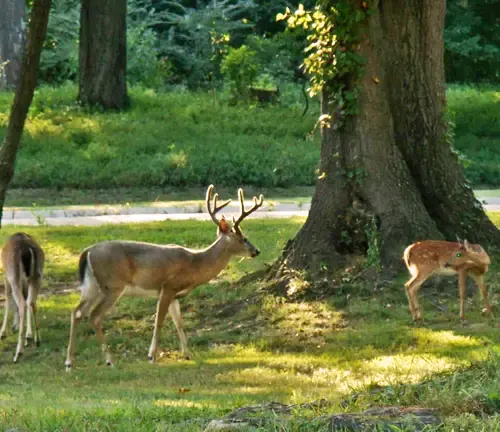
Culinary Applications

Surprisingly, cedar trees contribute not only to the landscapes but also to culinary experiences. Cedarwood imparts a unique flavor when used in cooking, especially in the art of smoking and grilling. Cedar planks, often employed in cooking techniques, add a distinctive aromatic essence to a variety of dishes.
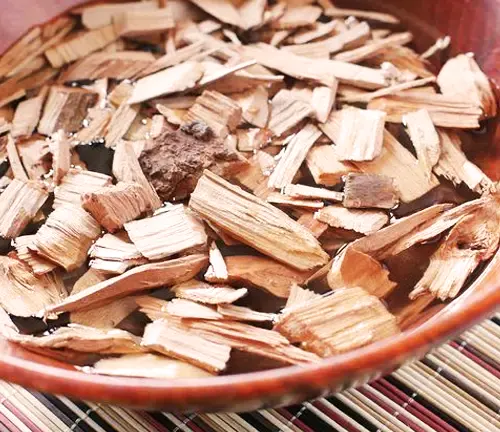
Wood Products and Applications
Cedarwood, prized for its durability and fragrant qualities, has found a myriad of applications. From the construction of ancient temples to the crafting of modern furniture, cedar wood stands as a testament to its versatility. Its resilience against decay and insects makes it a preferred material in boat building and the production of aromatic cedar chests.
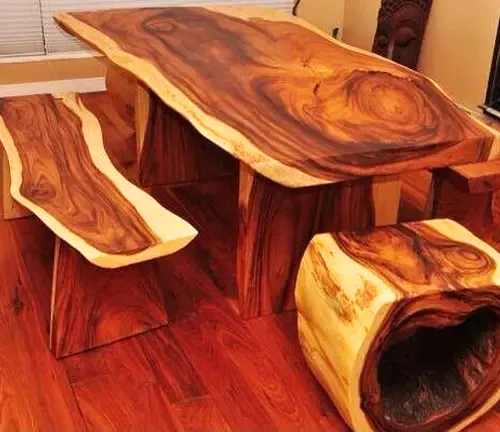

Cultivation and Care
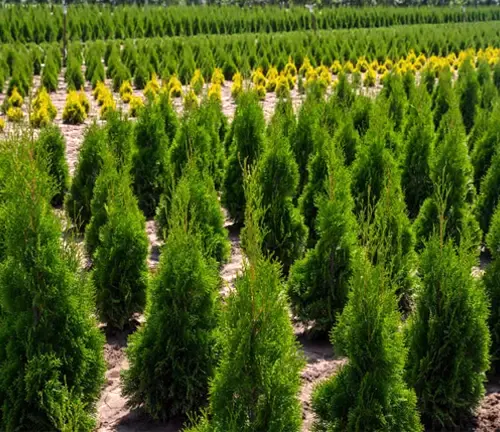
Cultivating cedar trees requires a delicate balance between understanding their natural habitat and providing optimal care. Whether in home gardens or reforestation projects, proper attention to soil conditions, sunlight, and water ensures the health and vitality of these majestic trees.
Benefits
The benefits of cedar trees extend beyond their tangible uses. In aromatherapy, cedarwood essential oil is hailed for its calming properties. Moreover, cedar trees contribute to carbon sequestration, aiding in the fight against climate change. Their presence in urban landscapes also enhances air quality and offers a respite for the human spirit.
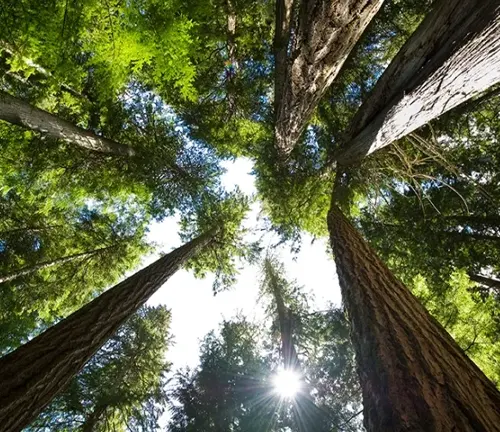
Common Variants of Cedar Tree
Western Red Cedar (Thuja plicata): Native to the Pacific Northwest of North America, this large evergreen tree is valued for its straight trunk and durable, decay-resistant wood. It’s a significant species in the timber industry and is also used for ornamental purposes.
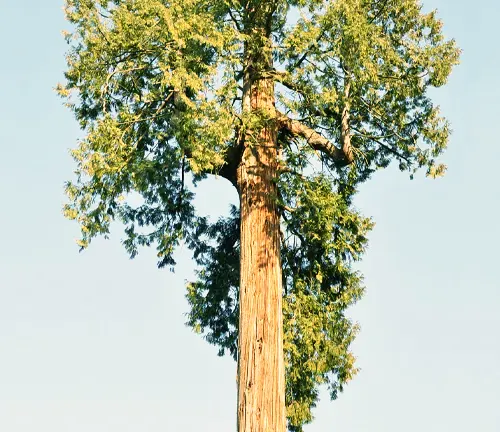
Eastern Red Cedar (Juniperus virginiana): Despite its name, this tree is not a true cedar but belongs to the juniper genus. It is native to North America and is known for its aromatic wood. It has a range of uses, including for cedarwood oil and as a windbreak tree.
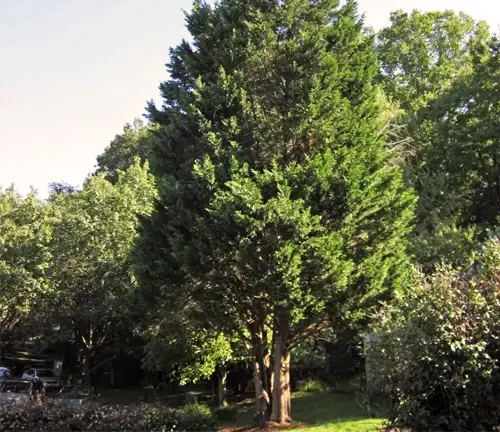
Deodar Cedar (Cedrus deodara): Native to the Himalayas, this cedar is characterized by its graceful drooping branches and aromatic wood. It is often planted as an ornamental tree in various parts of the world.
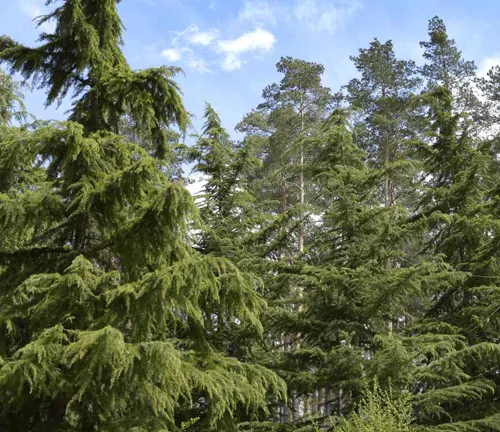
Cedar of Lebanon (Cedrus libani): Native to the mountains of the Mediterranean region, this species is recognized for its stately appearance and historical significance. It has been used for various purposes, including construction and crafting.
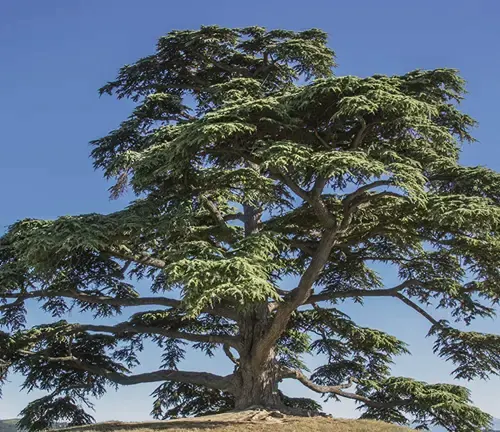
Atlas Cedar (Cedrus atlantica): Found in the Atlas Mountains of North Africa, this cedar species is known for its bluish-green foliage. It is commonly used as an ornamental tree in gardens and parks.
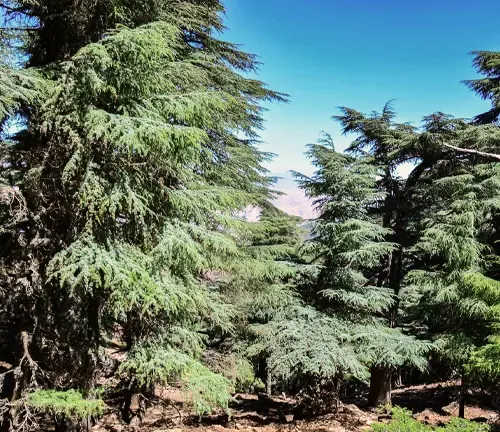
Incense Cedar (Calocedrus decurrens): Native to western North America, this tree is recognized for its fragrant wood, often used in the production of pencils and for its resistance to decay.
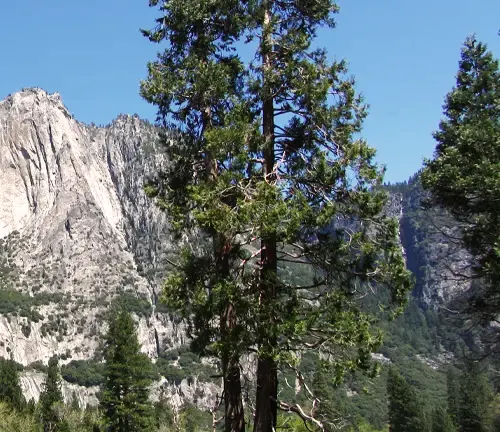
White Cedar (Thuja occidentalis): Also known as northern white cedar, it is native to North America. This small to medium-sized tree has fragrant wood and is utilized for various applications, including making canoes and shingles.

Spanish Cedar (Cedrela odorata): Found in Central and South America, this species is not a true cedar but is known for its lightweight and durable wood. It’s commonly used in the production of outdoor furniture and cigar boxes.
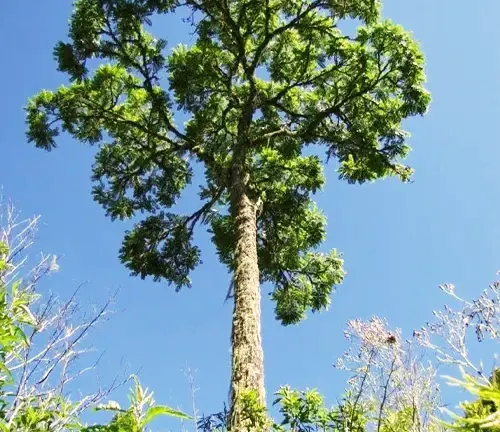
In conclusion, the Cedar tree emerges not just as a botanical wonder but as a companion on the journey of humanity. Through its rich history, versatile applications, and ecological contributions, the Cedar tree stands as a testament to the intricate dance between nature and culture, a dance that continues to unfold with every passing season.
Frequently Asked Questions (FAQs)
- Do cedar trees really repel insects and moths?
Yes, many cedar tree species, especially those in the Cedrus genus, produce aromatic oils that act as natural insect repellents. This property makes cedarwood a popular choice for making closets and storage chests to protect clothing from pests. - What is “cedar fever,” and how does it relate to cedar trees?
“Cedar fever” is a term used to describe allergic reactions that some people experience when exposed to the pollen released by certain cedar tree species, particularly the Ashe juniper (Juniperus ashei) in Texas. This allergic response can cause symptoms similar to hay fever, such as sneezing, congestion, and itchy eyes. - Are all cedar tree species used for the same purposes as Cedar of Lebanon?
No, while the Cedar of Lebanon (Cedrus libani) is highly valued for its wood in construction and crafting, other cedar species may have different uses. For example, the Eastern Red Cedar (Juniperus virginiana) is often used for its aromatic wood in the production of cedarwood oil and cedar chests. - Can cedar trees survive wildfires, and how do they adapt to fire-prone environments?
Some cedar species have evolved adaptations to withstand wildfires. Their cones are designed to open and release seeds in response to the heat generated by fires. This strategy allows cedar trees to regenerate and thrive in fire-prone ecosystems. - Do cedar trees have any traditional or cultural significance beyond their physical properties?
Yes, cedar trees hold cultural and spiritual significance in various indigenous cultures worldwide. For example, Native American tribes in North America have used cedar in rituals and ceremonies. Additionally, some ancient civilizations considered cedar trees sacred and incorporated them into religious practices and symbolism.




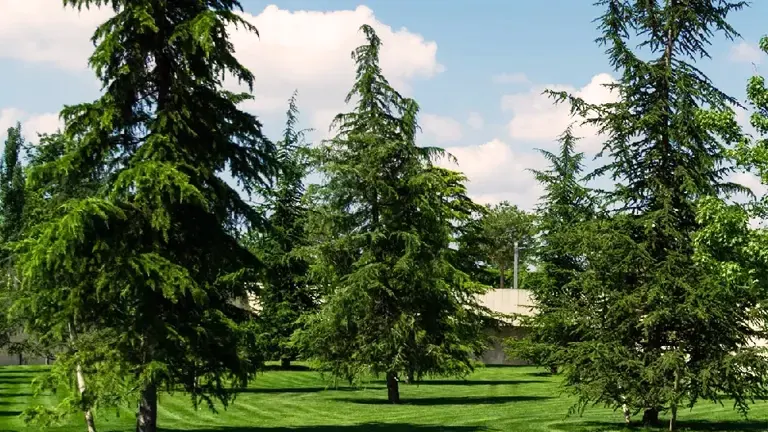
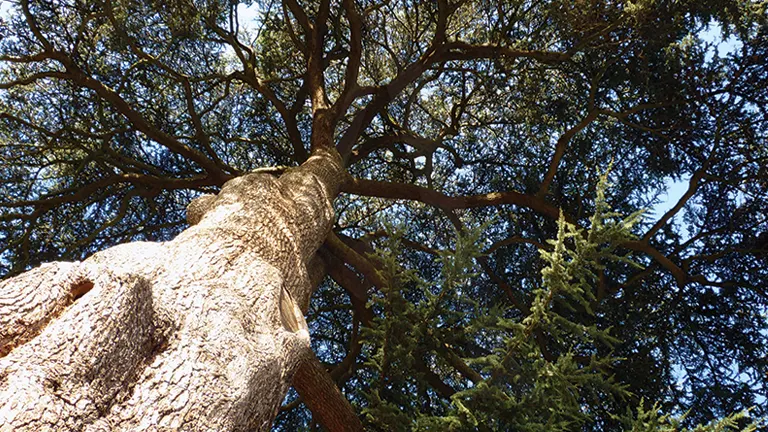





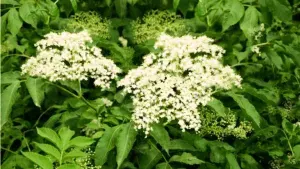
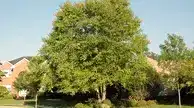
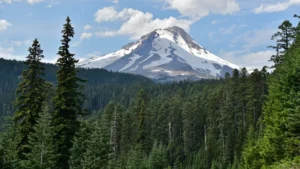
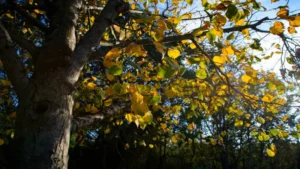

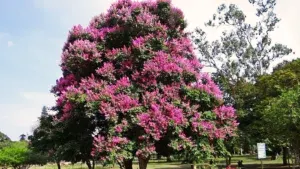
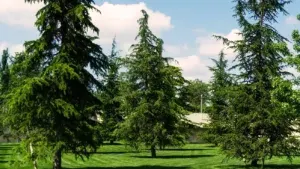

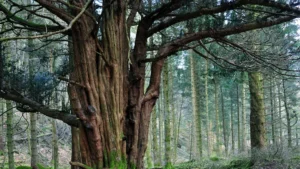
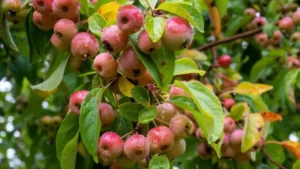
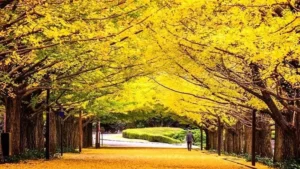
Leave your comment